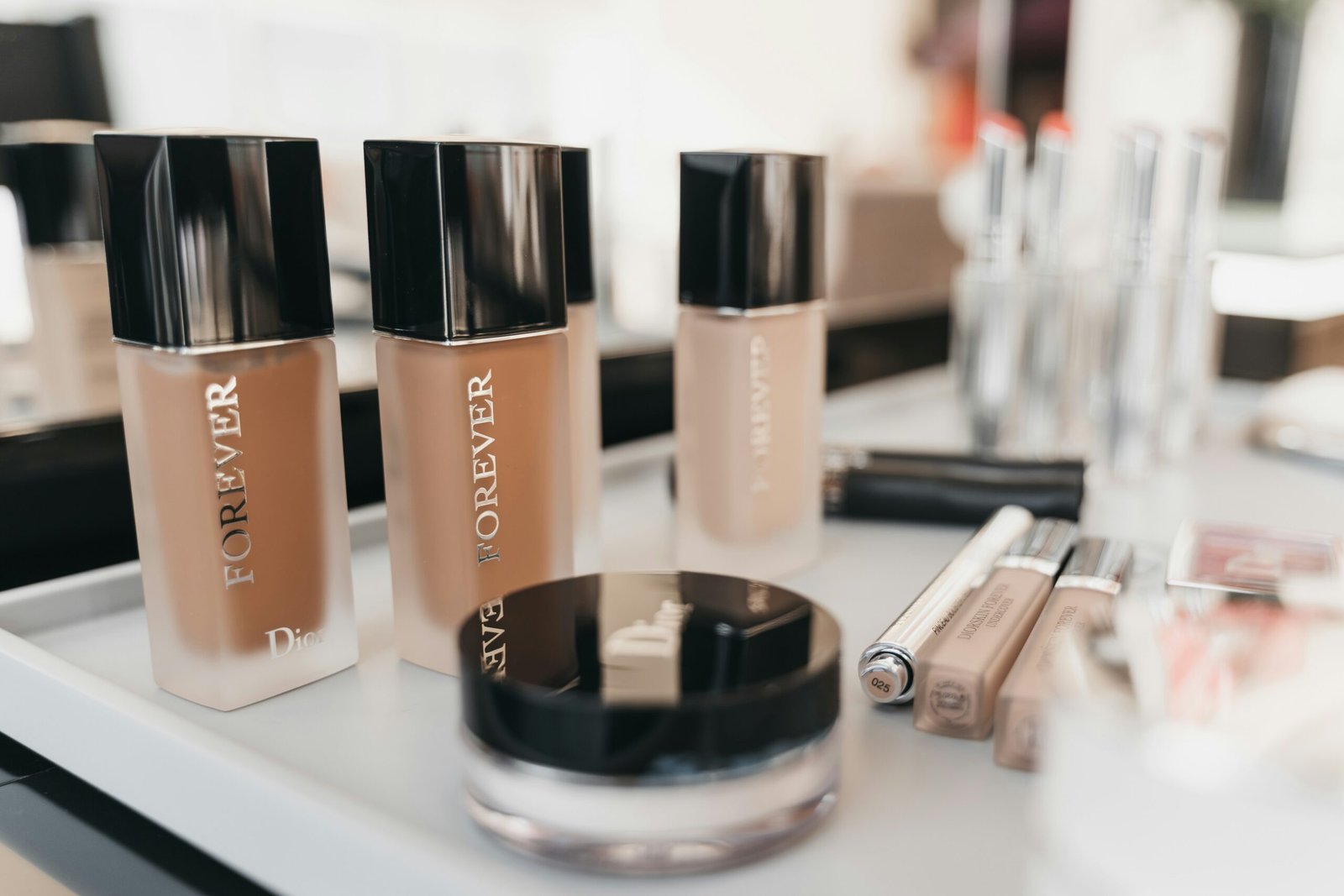Understanding Skin Undertones
Skin undertones refer to the subtle nuances of color beneath the surface of the skin, which can significantly influence makeup selection, particularly foundation. Unlike skin tone, which represents the surface color of the skin, undertones remain consistent regardless of tanning or skin conditions. Understanding one’s skin undertone is critical for selecting a foundation that blends seamlessly and enhances one’s natural beauty.
There are three primary types of skin undertones: warm, cool, and neutral. Individuals with warm undertones usually exhibit hints of yellow, peach, or golden hues in their skin, often sun-kissed or bronzed. Conversely, cool undertones present with pink, red, or bluish tones. Those classified as having neutral undertones display a balance between warm and cool, meaning their skin appears neither too yellow nor too pink.
Determining your skin undertone can be accomplished through several simple tests. One common method is the wrist test; examine the veins on the underside of your wrist. If they appear greenish, you likely have warm undertones. A bluish hue suggests cool undertones, while a mix of both indicates a neutral undertone. Another reliable technique is the jewelry test; individuals with warm undertones generally find that gold jewelry complements them better, whereas silver jewelry tends to suit those with cool undertones. Those with neutral undertones can pull off both gold and silver with ease.
Finally, examine how your skin reacts to natural lighting. Step outside during daylight and observe your complexion without any makeup. This can offer insights into whether your skin leans warmer, cooler, or remains neutral. Understanding these undertones is paramount for choosing the right foundation and avoiding mismatched or unnatural appearances.
Identifying Your Skin Type
Understanding your skin type is essential for selecting the right foundation that not only enhances your natural beauty but also complements your specific skin needs. Skin types can generally be categorized into four primary categories: oily, dry, combination, and sensitive skin. Each type exhibits distinct characteristics that influence the choice of foundation in terms of coverage, finish, and formulation.
Oily skin is characterized by excess sebum production, which can lead to a shiny appearance and, at times, acne. For individuals with oily skin, foundations with a matte finish, oil-free, or water-based formulations are often recommended. These types help control shine and create a smooth base without clogging pores. Look for foundations labeled as ‘long-wear’ or ‘mattifying’ to cater to this skin type’s specific requirements.
On the other hand, dry skin lacks moisture and can result in a flaky texture. For those with dry skin, it is advisable to opt for hydrating foundations that contain moisturizing ingredients. Creamy or liquid foundations can provide better coverage while imparting a luminous glow. Formulations that are rich in emollients can significantly improve the overall appearance of dry skin areas.
Combination skin presents a unique challenge, as it showcases characteristics of both oily and dry skin. Typically, the T-zone (forehead, nose, and chin) may appear oily, while the cheeks remain dry. A foundation that offers a balanced finish, such as a satin finish, can work effectively for this skin type. Consider using a mixture of different formulations to address varied areas of the face effectively.
Sensitive skin often reacts to various products, leading to redness or irritation. For this skin type, it is crucial to choose foundations made with hypoallergenic, non-comedogenic, and fragrance-free ingredients to minimize the risk of adverse reactions. Testing products on a small area of the skin can also help in assessing compatibility before fully committing.
To accurately assess your skin type, consider conducting a simple test: cleanse your face and observe how it feels after an hour without applying any products. If your skin appears shiny, you likely have oily skin. If it feels tight or looks flaky, you may have dry skin. If certain areas are oily while others are dry, you likely have combination skin, while persistent redness could indicate sensitive skin.
Choosing the Right Foundation Formula
When selecting a foundation, the formula plays a significant role in achieving the desired look and feel on the skin. Various foundation types, including liquid, cream, powder, and stick foundations, cater to different skin types and finish preferences. Understanding these options is crucial for anyone seeking the perfect match.
Liquid foundations are often favored for their versatility and ease of application. They typically provide a range of finishes from matte to dewy, making them suitable for various skin types. For individuals with oily skin, a matte liquid foundation can help to control shine, while those with dry skin may prefer a hydrating liquid formulation that offers a dewy finish. Some recommended products include Fenty Beauty Pro Filt’r Soft Matte Longwear Foundation for oily skin, and NARS Sheer Glow Foundation for those desiring a radiant look.
Cream foundations provide a thicker consistency, making them ideal for normal to dry skin types who need additional moisture. They often offer good coverage and can be blended for a more natural finish. A product like the Too Faced Born This Way Foundation is praised for its hydrating properties and natural finish, accommodating a wide range of skin types.
For those who prefer lightweight options, powder foundations can be excellent, particularly for oily or combination skin. They not only help to absorb excess oil but also provide a matte finish. A cult favorite in this category is the bareMinerals Original Loose Mineral Foundation, which allows the skin to breathe while effectively evening skin tone.
Finally, stick foundations are portable and convenient, making them perfect for on-the-go applications. They typically offer medium to full coverage with a satin finish, suitable for all skin types. A well-regarded option is the Makeup Forever Ultra HD Stick Foundation, which blends seamlessly into the skin for a flawless look.
Ultimately, choosing the right foundation formula requires considering individual skin type, finish preferences, and desired coverage. Making informed selections can lead to achieving a polished and natural appearance.
Testing and Selecting the Perfect Shade
Selecting the right foundation shade is a fundamental aspect of achieving a polished and natural look. Testing foundation shades effectively requires a systematic approached that includes swatching, observation under varied lighting, and proper blending techniques. These steps ensure that the chosen shade complements the skin tone and provides a harmonious appearance across different areas of the body.
To begin, it is essential to perform a swatch test directly on the skin. Instead of applying foundation on the wrist or palm, which often does not accurately reflect the facial skin tone, it is advisable to swatch the foundation on the jawline or on the side of the neck. This placement allows for an accurate comparison between the face and neck, as the skin tone can vary in these areas. Test at least three different shades that seem to be a close match to your skin tone. Once applied, allow the foundation to dry for a minute before assessing how well it blends in with your natural complexion.
Next, consider the importance of lighting while evaluating the foundation. Natural daylight tends to produce the most accurate representation of how a foundation will look on the skin. Avoid testing shades in artificial lighting such as fluorescent bulbs, as they can distort how the color appears. Ideally, assess the shade in various lighting conditions, including indoor and outdoor environments, to ensure you are satisfied with the match across different settings.
Finally, blending is crucial for achieving a seamless appearance. Gently blend the foundation using your fingertips or a makeup sponge to see how well it adapts to your skin’s texture. The goal is to obtain a foundation shade that flawlessly merges with your natural skin tone while also extending to the neck and décolletage, providing an overall unified look. By following these techniques, the selection process becomes more effective, ensuring you find the perfect foundation shade for a natural and radiant finish.


